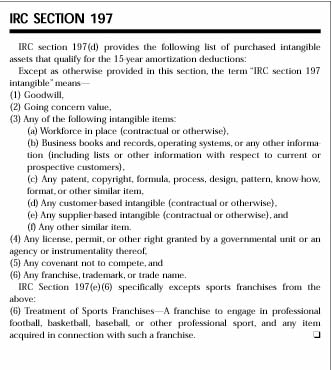

shareholder’s income in a similar fashion to Subpart F income. The average of the aggregate adjusted tax bases is determined as of the close of each quarter of the taxable year. The reduction allowed against tested income for the routine return on tangible assets is defined as 10% of the CFCs’ average aggregate adjusted tax bases in depreciable tangible property, referred to as qualified business asset investment (QBAI), adjusted downward for certain interest expense (collectively, referred to as net deemed tangible income return).

Certain types of gross income are excluded from being classified as tested income including: Tested income is the excess, if any, of the corporation’s gross income over its allocable deductions. This aggregated approach allows loss entities to offset other entities with tested income within the group, but not below zero. shareholder’s aggregated “net tested income” from CFCs over a routine return on certain qualified tangible assets. GILTI is generally defined as the excess of a U.S. shareholders of a CFC are subject to current U.S. General background on the GILTI regime, the aforementioned issues and other select highlights from the final and proposed regulations are summarized below.īackground – Section 951A For tax years beginning after 2017, U.S. The new proposed regulations also add an extra degree of complexity that must be considered when assessing the guidance for immediate and long-term impact. The final GILTI rules are complex and are retroactively applicable to the 2018 taxable year. The proposed regulations would also apply aggregate treatment to domestic partnerships for purposes of Section 951, effectively treating them as foreign partnerships for purposes of determining income inclusions of domestic partners. But this relief is unavailable until the proposed rules are final. In many cases, this could alleviate the need to rely on foreign tax credits to eliminate incremental tax on GILTI, and may significantly reduce the income tax labilities of taxpayers subject to foreign tax credit limitations. In essence, it would allow controlled foreign corporations (CFCs) to exclude tested income subject to a “high” effective rate of tax. If finalized, the GILTI high-tax exclusion would have a substantial impact on taxpayers.

For previous Grant Thornton coverage of the foreign tax credit proposed regulations click here.Īlthough the final regulations retain the approach and structure of the proposed regulations, taxpayers should carefully consider some of the notable revisions, including: The regulations also finalize proposed rules under Sections 78, 861 and 965, which were released last November as part of an extensive guidance package to implement changes to the foreign tax credit regime made by the TCJA.

For previous Grant Thornton coverage of the proposed regulations under Section 951A click here. The proposed regulations provided taxpayers with guidance in a number of areas, including application of Section 951A to consolidated groups and computational rules addressing tested income and qualified business asset investment. The final GILTI regulations generally retain the approach and structure of the proposed regulations ( REG-104390-18) released in September. GILTI, enacted under Section 951A, is a crucial component of the international tax system as revised by the Tax Cuts and Jobs Act (TCJA). 9866) and proposed ( REG-101828-19) regulations on June 14 addressing a variety of topics including global intangible low-taxed income (GILTI), foreign tax credits, the treatment of domestic partnerships for purposes of determining Subpart F income of a partner, and a so-called “GILTI high-tax exclusion.” The final regulations afford much needed certainty to taxpayers, but were largely upstaged by the proposed GILTI high-tax exclusion that could redefine the GILTI paradigm.


 0 kommentar(er)
0 kommentar(er)
